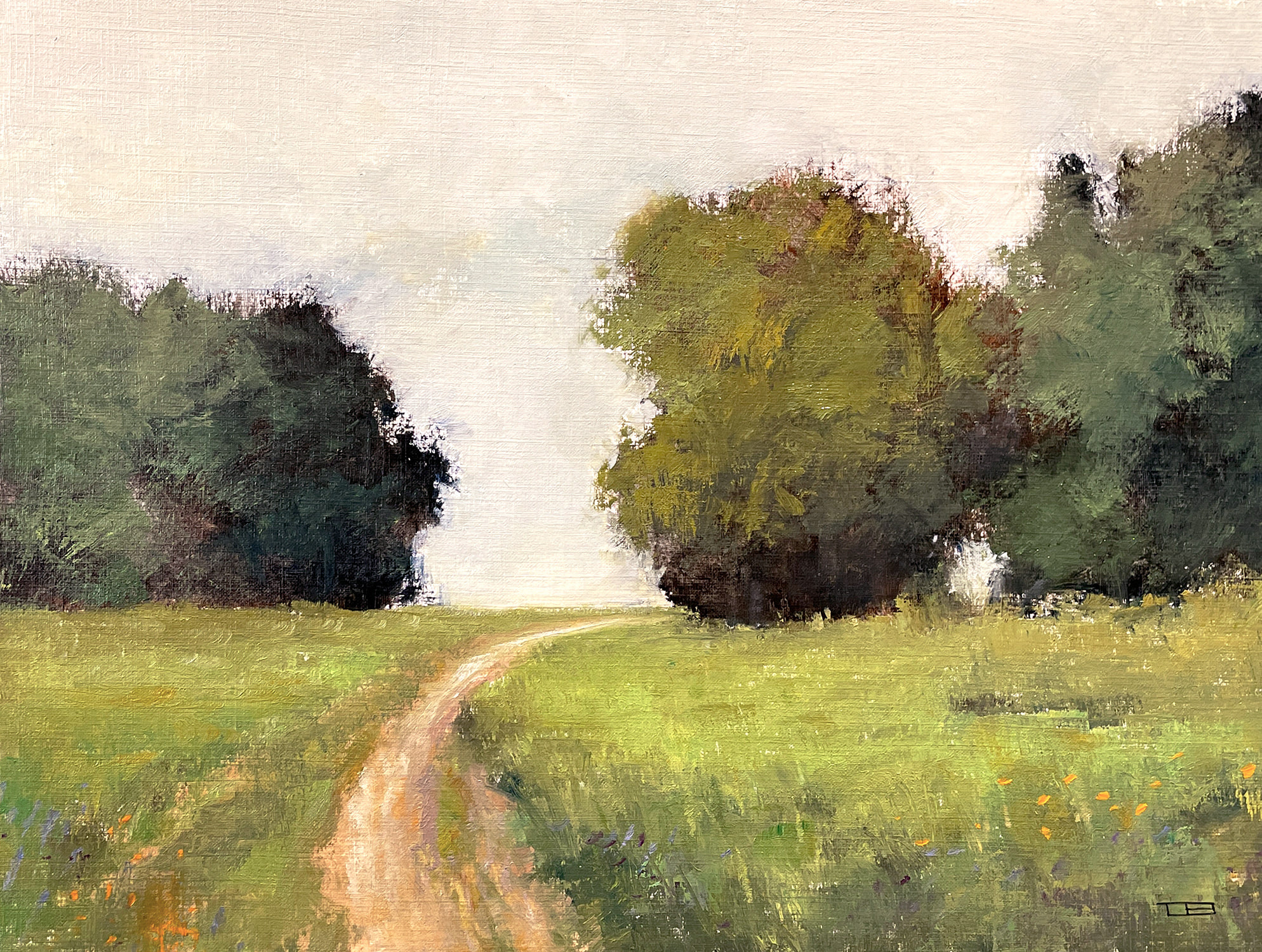Affordable New and Old Oil Paintings for Sale
Affordable New and Old Oil Paintings for Sale
Blog Article
Exploring Everything About Oil Paints: An Overview to Recognizing Their Elegance and Worth
Oil paintings have actually astounded audiences for centuries, supplying a look right into the artistic mastery of various periods. Their rich history is intertwined with ingenious strategies and extensive psychological expression. Comprehending the materials and methods behind these artworks can boost appreciation. In addition, the marketplace for oil paintings presents possibilities for investors and enthusiasts alike. As one discovers this remarkable world, the question emerges: what makes an oil painting truly beneficial?
The History of Oil Painting: A Trip Through Time
Although oil paint has origins that go back to old times, it absolutely grew during the Renaissance, when musicians discovered its adaptability and rich shade capacity. Early instances can be traced to the 7th century, with strategies developing significantly throughout societies. The tool ended up being famous in Northern Europe in the 15th century, especially through the jobs of musicians like Jan van Eyck, who originated its usage for in-depth realistic look and vibrant colors. This duration marked a separation from tempera paints, permitting higher deepness and texture. As oil painting spread, it affected countless artists, bring about masterpieces by distinguished numbers such as Leonardo da Vinci and Rembrandt. The medium's heritage continues, shaping the art world well right into modern-day times.
Understanding Oil Paints: Products and Techniques
As musicians discover the world of oil paints, they experience a diverse range of materials and strategies that define this tool. The key components of oil paint consist of pigments, which supply shade, and drying oils, such as linseed, that bind the pigments and facilitate application. Different ingredients can customize the paint's appearance and drying time, boosting versatility. Methods like glazing, where transparent layers are built up, and impasto, which entails using thick paint, permit for various aesthetic effects. In addition, making use of brushes, combination blades, and also fingers can produce special appearances and coatings. Comprehending these products and methods allows artists to fully express their creativity and achieve the wanted impact in their artwork.
The Duty of Shade in Oil Paints
Color plays an essential function in oil paintings, affecting both aesthetic charm and psychological resonance. Understanding color theory essentials, including the relationships between hues, can boost an artist's ability to convey mood and environment. Additionally, understanding color mixing strategies permits greater deepness and richness in a paint's scheme.

Shade Concept Essential
Recognizing shade concept is necessary for musicians working with oil paints, as it forms the structure for developing aesthetically interesting and unified structures. Color concept includes the study of just how colors engage, the color wheel, and the relationships in between main, secondary, and tertiary shades. Artists make use of complementary shades to improve contrasts and develop focal factors, while analogous shades promote unity and cohesiveness within an item. Additionally, the ideas of cozy and trendy colors affect the perception of deepness and space in a paint. Grasping these concepts allows musicians to adjust color efficiently, leading the customer's eye and interacting their intended message. Mastery of color concept eventually improves a musician's ability to convey emotions and concepts with their work.
Psychological Impact of Color
The psychological influence of color in oil paintings plays an essential role in just how audiences regard and connect with art work. Shades stimulate certain feelings and moods, influencing the audience's mood. As an example, warm tones like oranges and reds can create a feeling of heat and power, while trendy tones such as blues and environment-friendlies typically stimulate peace or introspection. Artists strategically choose shade combinations to enhance narrative elements, leading the audience's psychological journey. The saturation and contrast of colors better amplify these impacts, drawing focus and creating focus. Eventually, the interplay of shades in oil paints not just boosts their aesthetic allure however additionally functions as a powerful medium for emotional expression, enhancing the customer's experience and analysis.
Shade Combining Techniques
While several facets of oil paint add to the general structure, mastering shade blending methods is necessary for accomplishing preferred effects and deepness. Shade blending can be approached through numerous techniques, including the additive and subtractive processes. Additive blending includes integrating colors of light, while subtractive blending counts on pigments, where colors mix to produce new tones. Artists frequently make use of a restricted palette to develop harmonious jobs, comprehending the connections in between key, secondary, and tertiary shades. Methods such as glazing and scumbling even more improve deepness and luminosity. By masterfully mixing shades, a musician can evoke feelings, create prime focus, and achieve a feeling of realism, eventually elevating the paint's psychological and aesthetic impact.
Famous Oil Painters and Their Iconic Functions

Well known for their proficiency of color and method, oil painters have actually created a few of one of the most well known art work in background. Popular musicians like Vincent van Gogh astounded audiences with his stirring brushwork in "Starry Evening," while Claude Monet's "Impression, Daybreak" prepared for Impressionism. Leonardo da Vinci's "Mona Lisa" remains an enduring sign of imaginative genius, showcasing his skill in catching human expression. Rembrandt's "The Night Watch" shows his ingenious usage of light and darkness. Various other notable figures include Pablo Picasso, that revolutionized modern art with his vibrant experimentation in works like "Les Demoiselles d'Avignon," and Georgia O'Keeffe, whose dynamic depictions of blossoms and landscapes aided specify American innovation. Each musician's one-of-a-kind design contributed substantially to the oil painting landscape.
Exactly how to Review the Quality of an Oil Paint
Examining the high quality of an oil painting entails a careful assessment of workmanship strategies, in addition to an analysis of shade and structure. Observing brushwork, layering, and the application of paint can reveal the musician's skill level. In addition, the interaction of shades and the overall setup of aspects contribute substantially to the painting's visual worth.
Assessing Workmanship Methods
A precise analysis of craftsmanship strategies is necessary for identifying the top quality of an oil painting. Critics must first check out the application of paint; thick, textured brushstrokes might suggest an experienced hand, while overly uniform applications can indicate an absence of depth. oil paintings for sale. The layering method is additionally crucial; the visibility of glazes and differed thickness can improve luminance and complexity. In addition, the top quality of the materials made use of, such as the canvas and pigments, plays a considerable duty in sturdiness and total aesthetic. Interest to information in aspects like edges and shifts in between colors reflects the musician's dedication to their craft. Eventually, these techniques add to the painting's psychological impact and market price, functioning as signs of the musician's skill and intent
Assessing Color and Make-up
While reviewing the quality of an oil painting, one need to concentrate on the interaction of shade and composition, as these elements are fundamental to the artwork's general influence. Shade choices can evoke emotions and establish mood; therefore, the artist's scheme must be examined for harmony and comparison. A healthy composition guides the visitor's eye and creates a feeling of unity. Musicians typically use techniques like the guideline of thirds or website leading lines to boost aesthetic interest. Furthermore, using light and darkness can add depth, improving the three-dimensionality of the paint. Inevitably, an effective oil painting weds shade and make-up, involving the viewer and inviting a deeper recognition of the musician's vision and strategy.
Taking care of and Preserving Oil Paintings
Proper treatment and preservation of oil paints is essential for keeping their honesty and longevity. To protect these artworks, it is important to show them away from direct sunlight, which can trigger fading and discoloration. Preserving a steady setting with controlled temperature level and humidity more help in stopping damages. Cleaning up need to be done gently making use of a soft, dry cloth, avoiding any harsh chemicals that can hurt the paint or varnish. Regular examinations for indications of deterioration, such as flaking or fracturing, are advisable. When keeping or transferring oil paints, appropriate extra padding and framing are necessary to prevent physical harm. Eventually, diligent care adds to the aesthetic charm and worth of oil paintings with time.
The Market for Oil Paints: Collecting and Investing
Understanding the market characteristics for oil paintings is crucial for investors and collectors alike. The value of these artworks is affected by various aspects, consisting of the artist's online reputation, historical importance, and existing patterns. Collectors commonly seek pieces that reverberate directly while considering prospective recognition in worth. Galleries and auctions serve as main places for acquiring and marketing, with rates fluctuating based on need and rarity. Purchasing oil paints calls for research study right into the market, along with an understanding of authenticity and provenance. In addition, emerging artists might provide possibilities for significant returns, while established names can regulate high prices. Overall, a tactical strategy to collecting can generate both visual pleasure and monetary rewards.

Often Asked Questions
What Are the Ecological Influences of Oil Paint Materials?
The ecological effects of oil paint materials include the release of unstable natural substances (VOCs), unsafe waste generation, and resource removal for pigments. These variables add to contamination and eco-friendly destruction, increasing issues amongst environmentally mindful artists and consumers.
Just How Do Different Canvases Affect Oil Paint Results?
Different canvases affect oil painting results considerably. Texture, surface area, and absorbency high quality can change paint application, drying times, and color vibrancy. Artists frequently select specific canvases to accomplish preferred impacts and improve their imaginative expression.
Can Oil Paintings Be Brought Back if Damaged?
If harmed, Oil paintings can certainly be brought back. Specialist conservators utilize various strategies to repair tears, tidy surface areas, and address staining, ensuring that the art work retains its initial elegance and value for future generations.
What Are the Signs of an Initial Oil Painting?
The signs of an initial oil painting include noticeable brush strokes, structure variations, and an irregular canvas weave (oil paintings for sale). Furthermore, authenticity may be validated via provenance, trademarks, and the visibility of a varnish layer distinct to oil tools
Exactly How Has Innovation Influenced Modern Oil Paint Techniques?
Technology has considerably influenced contemporary oil paint strategies by introducing electronic tools for planning, enhanced materials for texture and durability, and on-line platforms for selling and sharing art, consequently increasing artists' innovative possibilities and target market get to. Oil painting has roots that date back to old times, it genuinely grew throughout the Renaissance, when musicians discovered its versatility and abundant color possibility. The psychological impact of shade in oil paintings plays a vital function in just how visitors connect and regard with art work. While numerous aspects of oil paint contribute to the total make-up, grasping color blending methods is important for achieving wanted effects and deepness. Reviewing the high quality of an oil painting includes a careful analysis of craftsmanship techniques, as well as an evaluation of color and make-up. While assessing the top quality of an oil painting, one must concentrate on the interplay of shade and structure, as these elements are basic to the artwork's total impact.
Report this page